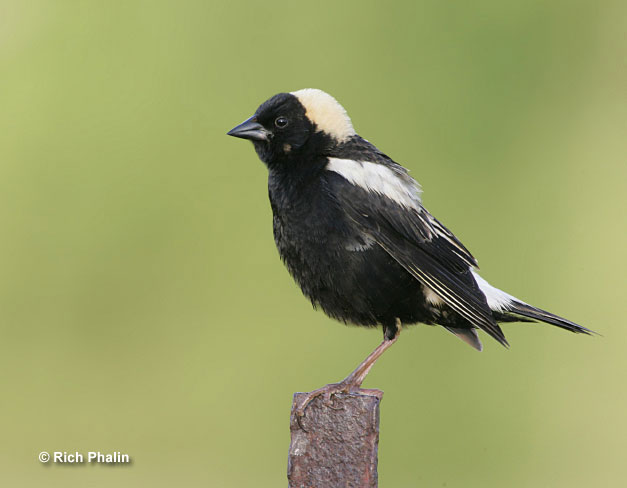
It’s easy to overlook black birds because they don’t have brightly colored feathers. Additionally, many people look over these birds because of their bad reputations.
However, there is plenty of beauty and intelligence among these birds. Blackbirds have important roles in our ecosystems, like controlling nuisance insects and scavenging roadkill.
We’ve compiled a list of the most common black birds, their descriptions, frequently asked questions, and more! Some of these birds may be mostly black, while others may only have sections of black. We would like to mention that most of the blackbirds seen are males.
Females of the same species may be completely different in color.
On this page
1. American Crow
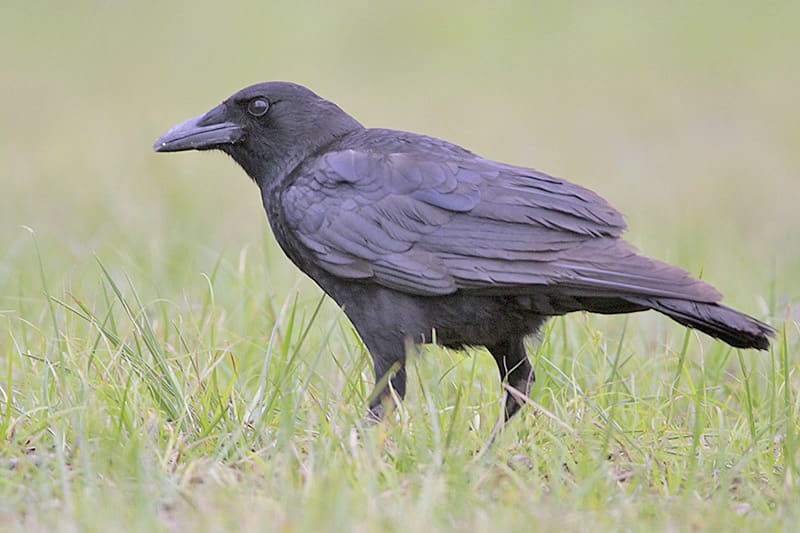
Photograph © Greg Lavaty
American Crows are large black birds with extreme intelligence and distinct voices. They can be found in the majority of North America.
These birds have thick necks, long legs, short tails, and straight bills. When they’re flying, their wide, rounded wings can be seen. These birds are entirely black, including their bills and legs.
Males and females look identical; the only way to tell the difference is by looking at their size. Males are larger than females.
Related: The symbolism of black feathers
American Crows can be found in various places, including farmland, streams, marshes, golf courses, city parks, feedlots, beaches, cemeteries, yards, landfills, and more.
These birds are highly adaptable and will live in any open area with few trees. Crows do not like the desert and avoid continuous expanses of forest. However, they will show up in places like campgrounds.
2. Bobolink

Bobolinks are very striking birds. No other bird in North America has black underparts and a white back like the Bobolink.
The bright straw-colored patch on the top of the head and impressive song add to the beauty of this bird. These birds are small and have somewhat flat large heads. They have sharp bills, short necks, and short tails.
Male Bobolinks are almost completely black, have white on their rumps and backs, and have rich tan napes. Females are mostly light brown and have dark brown streaks on their flanks and back. They have bolder brown stripes on their crowns but have no streaks on the nape of the neck. The bill is in color pinkish.
Bobolinks can be found in the northern United States and southern Canada during the breeding season. They prefer large fields with a mixture of broad-leaved plants and grasses. They nest in eastern meadows and hayfields.
When the breeding season ends, Bobolinks move to coastal areas and freshwater marshes to molt before migration. Their wintering area is in South America, where they spend their time in marshes, grasslands, sorghum fields, and rice fields.
3. Common Grackle
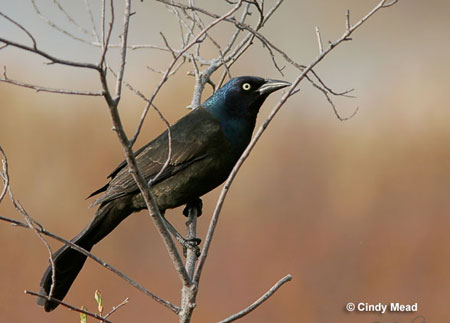
Common Grackles look very similar to blackbirds (in fact, they belong to the same Icteridae family), just slightly longer and taller. These birds are relatively large and have long tails and legs. Their bills are longer than most blackbirds, and they have flat heads. In flight, it can be seen that the wings are short when compared to the tail. Male Common Grackles are slightly bigger than females.
From a distance, Common Grackles appear to be completely black. However, once you get an up-close look, you can see that they have iridescent bodies and glossy purple heads. They also have bright yellow eyes that really stand out against the purple heads. Female Common Grackles are not as shiny as males, and young birds have dark eyes and brown plumage.
Common Grackles do well in human-made environments and can be found throughout a good portion of North America. They use open ground for foraging and scattered trees for nesting. Typical habitats include open woodland, city parks, forest edge, parking lots, grassland, feedlots, meadows, suburban swamps, cemeteries, and marshes.
They look similar to their relatives, like Great-tailed Grackles, Rusty Blackbirds, and the Brewer’s Blackbird, so better keep your eyes open!
4. Common Raven
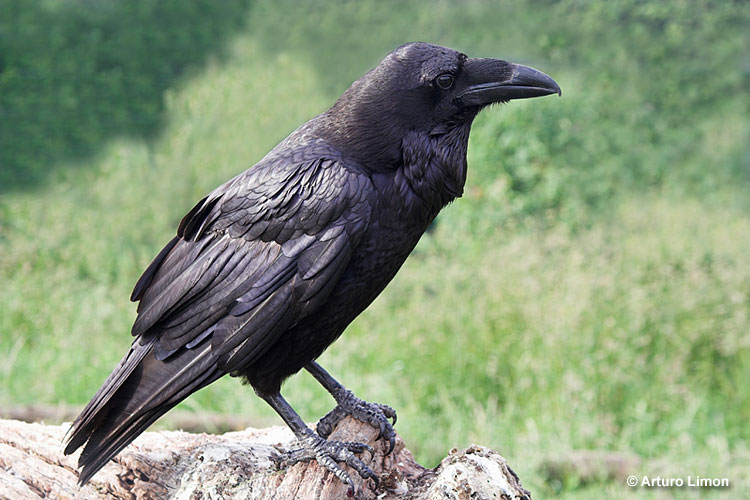
Common Ravens are among the most intelligent birds in the world, gaining a reputation for solving complicated problems. These black birds are large and have shaggy throat feathers, thick necks, and large, slightly curved beaks. They look slender when compared to crows and have narrower, longer wings.
These birds are completely black, including their eyes, legs, and beaks.
Common Ravens can be seen throughout most of the Northern Hemisphere in nearly any habitat. These habitats include beaches, tundra, islands, grasslands, chaparral, desert, sagebrush, and mountains.
The presence of humans has allowed Common Ravens to expand into areas they didn’t inhabit before. For example, they can now inhabit deserts due to irrigation and artificial ponds.
These birds are also gradually moving back into northeastern Canada and United States forests because the forests are regenerating.
5. Black Phoebe
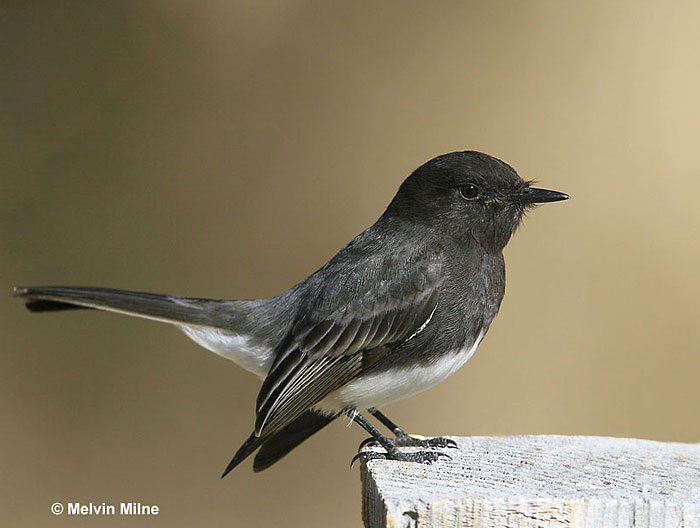
Black Phoebe is a small black and white bird, named after its mostly black plumage.
See more: Black birds with white bellies
These passerines are small in size, but they make up for it with their interesting behavior. Black Phoebes prefer open areas but can often be found around bodies of water. Since Black Phoebes are part of the flycatcher family, they mainly feed on insects.
Black Phoebes can be found in Central America, and in southern and western sides of the United States.
6. European Starling
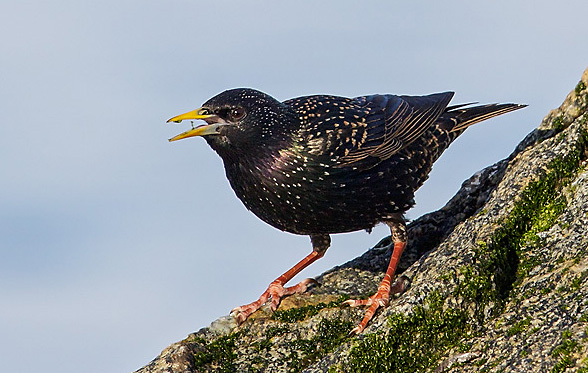
Photograph © Glenn Bartley.
European Starlings are about blackbird-sized but chunkier. However, they have slender, long beaks and short tails. In flight, you can easily see that their wings are pointed and relatively short, making them look like small, four-pointed stars. This is where they get their name from.
Male and female European Starlings look identical. From a distance, these starlings look completely black. However, we can see that they have yellow beaks and are purplish-green iridescent when we take a closer look. In the winter, their plumage changes to brown, with white spots covering their entire body.
European Starlings usually live where people are. They’ll use city streets, mowed lawns, agricultural fields, and city streets for feeding. Structures, buildings, and trees are used for nesting. They don’t like continuous stretches of forest or the desert.
Like their name hints, European Starlings are native to Europe. However, after their introduction to the U.S., their populations have grown rapidly. These starlings require open, grassy areas, a water source, and buildings or trees containing cavities suitable for nesting. Later on, they’ll start gathering in large flocks.
7. Red-Winged Blackbird
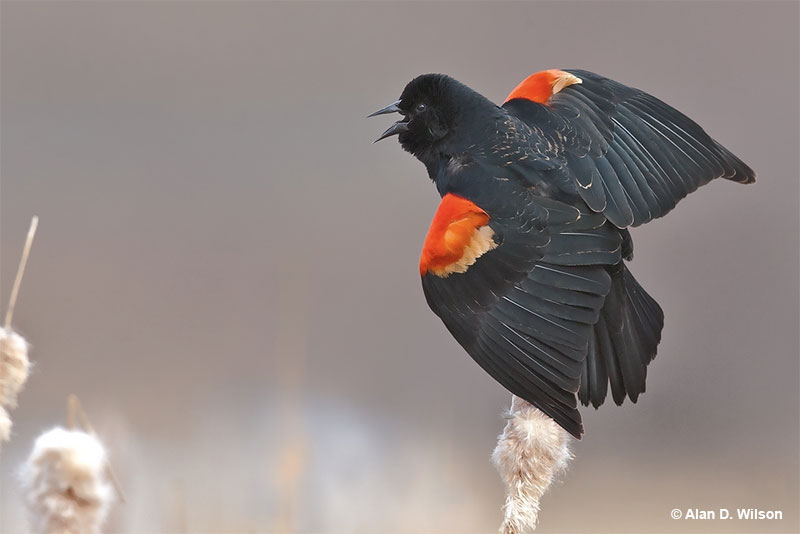
Red-winged Blackbirds are stocky, broad-shouldered blackbirds. When they’re perched, these birds look like they have a hump-back, and males usually sit with their tails slightly flared.
It’s hard to mistake Male Red-winged Blackbirds. They’re mostly glossy black but have red-and-yellow shoulder patches. Females are dark brown and have pronounced streaks throughout their bodies. They often have a whitish eyebrow and are paler on the breast.
Red-winged Blackbirds prefer to spend their time in wet habitats during the breeding season. Examples of some of these habitats are rice paddies and marshes. However, during their breeding season, they have been seen inhabiting drier places like fallow fields, alfalfa fields, and sedge meadows.
Occasionally, these birds will nest in wooded areas alongside waterways. In the winter and the fall, they congregate in feedlots, agricultural fields, grasslands, and pastures.
8. Brown-Headed Cowbird
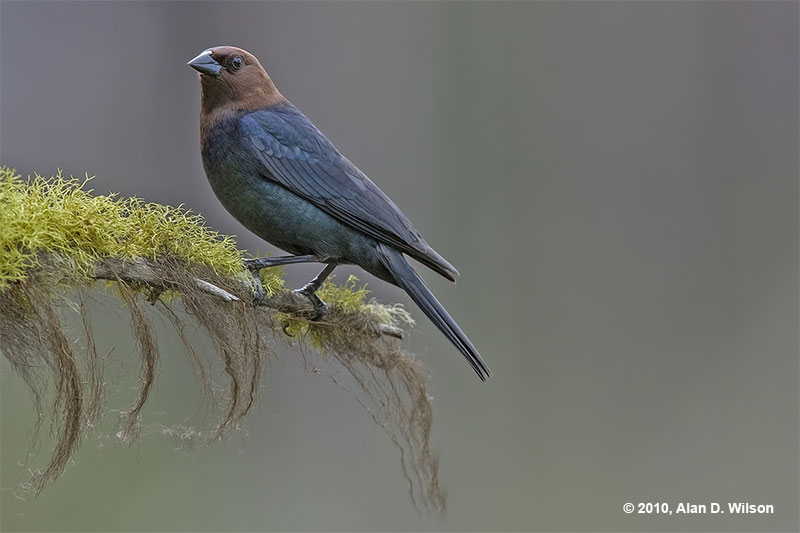
Brown-headed Cowbirds are small blackbirds with thicker heads and shorter tails. Their bills have a very distinct shape; they’re thicker at the base and much shorter. In flight, you can easily see their shorter tails.
Male Brown-headed Cowbirds have a dark brown head and glossy black plumage. From a distance, people often mistake these birds for others because their plumage can look completely black in poor lighting.
Female Brown-headed Cowbirds are plain brown, with the lightest brown being on their underparts and heads. They have fine streaks on the belly and dark eyes. They have a bad rep for being brood parasites – laying their eggs in other’s nests.
Brown-headed Cowbirds prefer to inhabit grasslands with scattered, low trees but can also be seen in prairies, woodland edges, fields, brushy thickets, pastures, residential areas, and orchards. They tend to avoid forests, which is why they’ve been able to expand their range.
With increased fragmentation of forests and development, more of their preferred habitats are appearing. In the winter, Brown-headed Cowbirds will roost with several species of blackbirds. Their flocks can contain up to 100,000 birds.
9. Lark Bunting
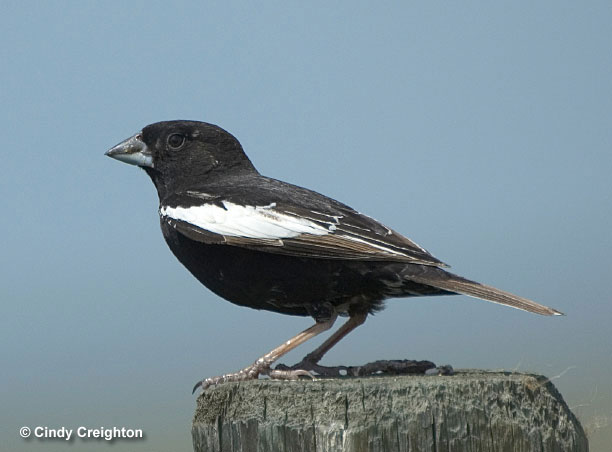
Lark Buntings are sparrows that are heavier-set looking. They have conical, large bills and robust bodies.
Male Lark Buntings are remarkable-looking birds with unmistakable white wing patches and black bodies. Females, nonbreeding males, and immature Lark Bunting are pale with brown streaks below, brownish below, white wingtips and inner tail feathers, and extensive white in the upper wing coverts. Their bills are a distinctive pale blue-gray.
Lark Buntings inhabit the shrubsteppe and grasslands of North America. They can be found in the West, Midwest, and South West parts of North America, Canada, and Mexico.
During their breeding season, you’ll most likely see them in large grassy areas that contain vegetation like blue grama grass, wheatgrass, big sagebrush, and needle-and-thread grass.
Lark Buntings will nest in prairie vegetation like four-winged saltbush, red triple-awn grass, green-plumed rabbitbrush, and cottonthorn. In the winter, Lark Buntings will migrate in flocks with other sparrows to different types of open habitats.
10. Boat-tailed grackle
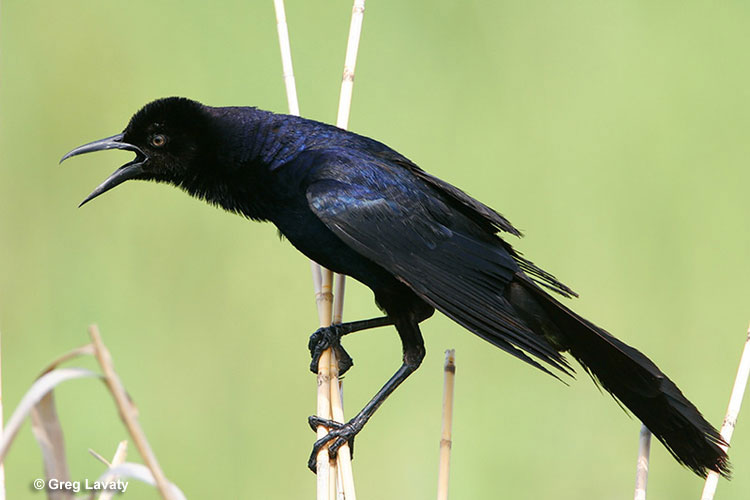
Boat-tailed Grackles are lanky, large songbirds. They have long legs, pointed, long bills, and rounded crowns. One distinct feature of these birds is that the males have long tails. They make up nearly half of their body length.
Boat-tailed Grackles hold their tails in a V-shape, making it look like the keel of a boat. This is where they get their name from.
Male Boat-tailed Grackles are glossy black all over, while the females are russet below and dark brown above. Females also have a dull face pattern of a dark cheek, pale “mustache” stripe, and pale eyebrows. In addition, their eye colors vary; along the western Gulf Coast, they’re brown, and along the Atlantic Coast, they’re bright yellow.
Boat-tailed Grackles breed in fresh and saltwater marshes along the Gulf and Atlantic coasts. These birds are closely associated with saltwater and are hardly ever found more than 30 miles away from salt water. The exception is Florida, where they occur across its width.
Their regular breeding habitats include marshes along lakes, impoundments, ponds, or rivers. In addition, they’re often seen foraging in plazas, cultivated fields, city streets, stockyards, salt marshes, and open beaches. They stay in the same habitats during their nonbreeding season as well.
11. Great Cormorant
Great Cormorants are heavyset seabirds. They have thick, long necks, heavy hooked bills, and blocky heads. Their tails are pretty long, wings are wide, and their legs are short.
Male and female adult Great Cormorants look the same. They are large black seabirds with some yellowish skin around their bills and white on their throats and faces.
When in breeding plumage, the adults have white neck feathers and a square patch of white on their thighs. Juvenile Great Cormorants are brownish overall and have whitish throats and bellies.
Great Cormorants can be found along the eastern coast of North America. They live on rocky sea coasts throughout the year. During their breeding season, they can be seen nesting on rocky cliffs or islands.
Their nests are usually on the ground, but sometimes they nest in stunted conifers. During the breeding season, they avoid disturbance as much as possible.
They can be seen perching as far from humans as possible and will select a nesting area that doesn’t have mammal predators. Their preferred habitats during winter and migrations are the same as those used in the breeding season.
12. Black Eagle
Black Eagles are large raptors. They have heavy bodies, long, hooked bills, and large heads. These eagles are very distinct because of their dark coloring. Male and female Black Eagles look the same.
From a distance, they appear to be completely dark in color, but when you take a closer look, you can see the pale barring on the undertail, primaries, and secondaries. Additionally, they have bright yellow bills and feet.
Black Eagles breed in subtropical and tropical Asia and occupy evergreen, montane, and lowland forests. These forests can be anywhere from 0 to 4,000 meters above sea level. They prefer mountainous country, forest cover, and slopes.


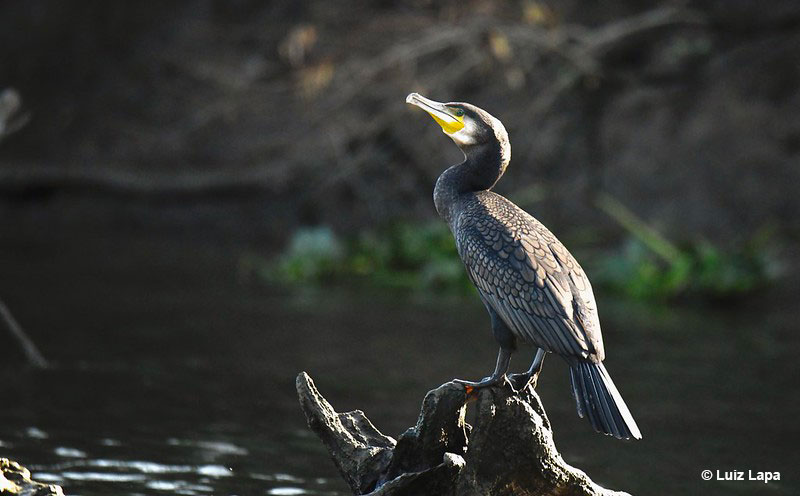
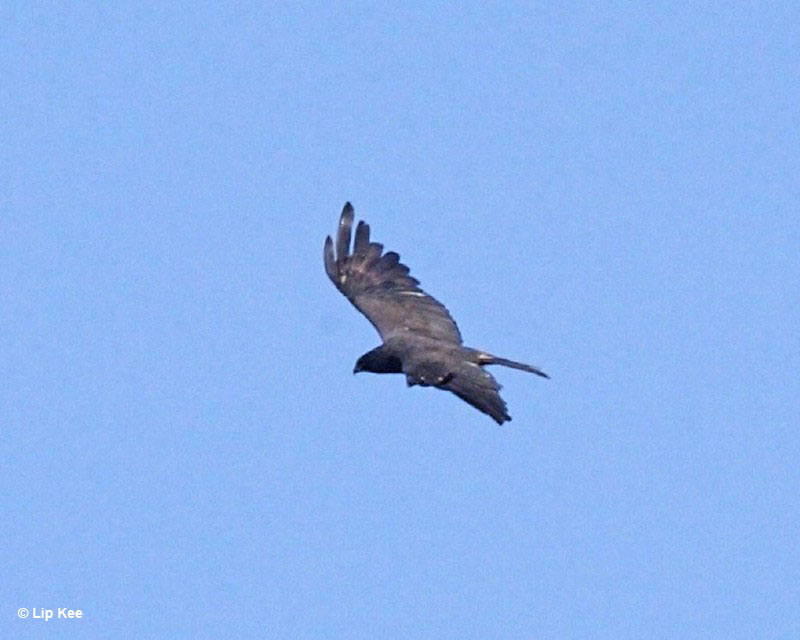
deb dana
Monday 15th of April 2024
saw a line of about 25 black birds flying over lake Michigan by Chicago- the bit that was amazing was that they flew in a straight line. They were definitely smaller than cormorants and flew about 1 maybe 2 feet over the water.. Too far away to see much detail but the flying patterns (low and in a line) were very cool
Patrick O'Donnell
Tuesday 16th of April 2024
@Deb- What a cool sighting! Thank you for sharing it with us. It sounds like you probably saw a flock of scoters. These large black ducks often fly in straight lines low over the water and also migrate through the Great Lakes. The birds could have been White-winged, Black, or Surf Scoters.
Don
Sunday 31st of March 2024
Can Crows or Ravens ever have yellow legs?
Patrick O'Donnell
Tuesday 2nd of April 2024
@Don- That would be pretty unusual. A bird with leucistic plumage could maybe have pale legs but that bird would probably also have patchy black and white plumage.
Jean Gramling
Monday 11th of March 2024
I love your information you shared. Can you tell me if a black eagle is found in Minnesota. I found some wing feathers from a bird my dog killed and they look a lot like the black eagle feathers from the picture. Thanks!
Patrick O'Donnell
Monday 11th of March 2024
@Jean- We're glad you like the information! In Minnesota, Bald and Golden Eagles occur but no black eagles. They have dark brown feathers but not black ones.
Christopher Sprangel
Monday 4th of March 2024
You missed Brewers Blackbirds? I have 240-250 mid-sized, ie, definitely larger than red-winged blackbirds, blackbirds in my backyard. No white eyes, not a grackle, I’ve raised a grackle so I know what they look like. All black, black head, black wings, dark eyes. I hear red-winged blackbirds can hide their wing patch, but what explains the size difference?
Thanx! Chris
Patrick O'Donnell
Monday 18th of March 2024
@Chris- It looks like we might need to update that article! If you live in the western USA, yes, they probably are Brewer's Blackbirds.